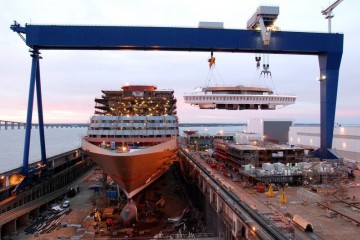Some statements are too banal to be repeated; yet, repeated they are. How often we hear in yet another conference on the dire prospects of shipping that “the market should decide” – as if these market decisions would be the solution rather than the main cause of shipping’s current problems. A variant of the unconditional faith in the wisdom of markets is “demand-driven development” – and this is what I would like to focus on here. People seem to mean very different things when they mention demand-driven development – some interpretations make sense, but some are outright dangerous. I will illustrate this with the case of port development.
At the heart of it all are two related but subtly distinct questions: who are the clients of ports – and who is driving demand for ports? Ports tend to think that shipping companies are their main clients – and often deduct from it that shipping is driving port demand. But this is obviously not true. Ports without ships are meaningless, but so are ships without cargo.
The ultimate reason to develop ports is to stimulate exports or imports, not to satisfy shipping companies. However, most ports are very attentive to the demands of their customers – too attentive. Sure enough, not providing satisfactory services could mean that shipping companies call another port. But it is one thing to adapt to customers’ demand, yet another thing to take shipping’s demands as the basis for port development. Do not forget that shipping companies want ample port supply, so that they can chose and negotiate between ports for the lowest prices and the best deals.
There is a port bubble, at least in the container sector – and one explanation of this excess supply is that ports and financiers have listened too closely to shipping companies. The consequence: waste of money.
Ports should have realised that demand for their services is driven by the companies that ship large quantities of goods, the shippers. Ports would do well to develop close relations with these shippers, so as to anticipate fluctuations in demand. Equally important: take the strategic orientations of shippers into account when funding new ports and port hinterland infrastructure.
An interesting proposal in this respect has been formulated by Feport, the federation of private terminal operators in Europe, in their recent white paper. They propose that port-related projects applying for EU funding should score higher if they come with a “consortium” of stakeholders that is interested in the project. This could consist of shippers, shipping companies and other transport actors – and it could take the form of letters of support, expressing an interest in the project. This comes indeed close to building a case for real demand-driven development. Building on this proposal and going one step further, one could think of introducing consequences for stakeholders that support a project but in the end do not use it when the project is realised. In short, demand-driven, but you better be careful what you wish for.



